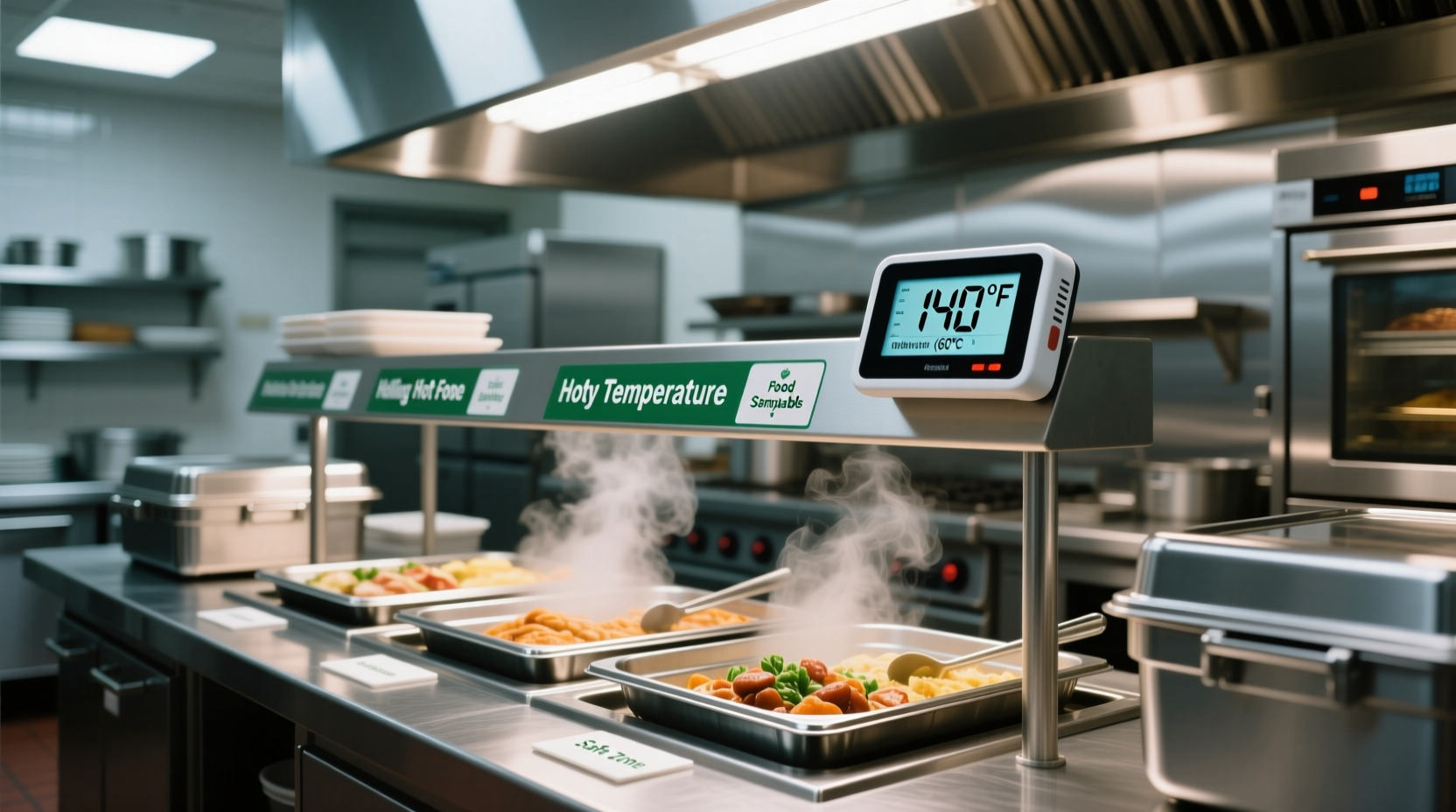Why 135°F Is the Critical Threshold for Hot Food Safety
When you're serving hot food, maintaining proper temperatures isn't just about quality—it's a critical food safety requirement. The 135°F (57°C) minimum isn't arbitrary; it's scientifically determined to keep food out of the temperature danger zone (40°F-140°F), where harmful bacteria like Salmonella, E. coli, and Staphylococcus aureus multiply rapidly.
Understanding the science behind this standard helps you appreciate why precise temperature control matters. Bacteria growth follows an exponential pattern in the danger zone. At 70°F, some pathogens can double in number every 20 minutes. By maintaining food at 135°F or higher, you effectively stop this multiplication process, keeping food safe for consumption.
Food Safety Standards Around the World
While 135°F (57°C) is the standard in the United States according to the FDA Food Code, temperature requirements vary slightly across different regions. These differences reflect local food safety regulations and risk assessments:
| Region | Minimum Holding Temperature | Governing Body | Key Documentation |
|---|---|---|---|
| United States | 135°F (57°C) | FDA | FDA Food Code 2022, Section 3-501.16 |
| Canada | 140°F (60°C) | CFIA | Safe Food for Canadians Regulations |
| European Union | 140°F (60°C) | EFSA | EC Regulation No 852/2004 |
| Australia/New Zealand | 140°F (60°C) | FSANZ | Food Standards Code 4.2.4 |
Practical Implementation: Keeping Food Safe in Real-World Settings
Knowing the temperature standard is only half the battle. Proper implementation requires the right equipment, monitoring, and procedures:
- Equipment selection: Use commercial-grade warming equipment like steam tables, heated buffet stations, or warming ovens that can consistently maintain temperatures above 135°F
- Temperature monitoring: Insert calibrated thermometers into multiple locations of large food quantities, checking temperatures at least every four hours
- Time management: If food drops below 135°F, you have a maximum of four hours to either reheat it to 165°F for 15 seconds or discard it
- Food density considerations: Thick foods like stews require deeper thermometer insertion to measure internal temperature accurately

Contextual Factors That Affect Temperature Requirements
While 135°F is the general standard, specific situations may require adjustments to your hot holding practices:
High-risk populations: When serving elderly individuals, young children, pregnant women, or immunocompromised people (common in healthcare or school settings), many food safety experts recommend maintaining temperatures at 140°F (60°C) as an added safety margin. The FDA acknowledges this precautionary approach in their guidelines for facilities serving at-risk populations.
Transportation considerations: When moving food from kitchen to serving area, temperature drops are common. Use insulated carriers and minimize transport time. The National Restaurant Association recommends checking temperatures immediately after transport to ensure they remain above 135°F.
Buffet service challenges: Self-service buffets present unique challenges as guests frequently open warming trays. Place smaller quantities of food in serving containers and replenish frequently from a fully heated source to maintain safe temperatures throughout service.
Evolution of Hot Holding Temperature Standards
Food safety temperature standards have evolved significantly based on scientific research:
- 1993: FDA initially established 140°F (60°C) as the minimum hot holding temperature
- 1999: Research demonstrated that 135°F provided equivalent safety with less energy consumption, leading to the current standard
- 2009: FDA Food Code officially adopted 135°F as the standard minimum temperature
- 2022: Current FDA Food Code maintains 135°F standard with enhanced monitoring requirements
This evolution reflects how food safety standards adapt to new scientific understanding while balancing practical considerations for food service operations.
Troubleshooting Common Hot Holding Problems
Even with proper equipment, challenges arise in maintaining safe temperatures:
- Temperature fluctuations: If your holding equipment cycles above and below 135°F, increase the thermostat setting by 5°F and verify with an independent thermometer
- Cold spots in large containers: Stir food regularly and use multiple thermometers to identify inconsistent heating
- Overheating concerns: While safety requires minimum temperatures, excessive heat (above 165°F) can degrade food quality—aim for 135-145°F range for optimal safety and quality
- Power outages: Have a plan for monitoring food temperatures during outages; discard any food that remains in the danger zone for more than four cumulative hours
Essential Food Safety Practices Beyond Temperature Control
Temperature control is just one component of comprehensive food safety. Combine proper hot holding with these critical practices:
- Implement a documented temperature monitoring system with staff training
- Use color-coded thermometers to prevent cross-contamination
- Establish clear protocols for what to do when temperatures fall below safe levels
- Train all staff on the 2-hour/4-hour rule for food in the temperature danger zone
- Regularly calibrate all temperature monitoring equipment
Remember that food safety is a continuous process, not just a temperature reading. The FDA Food Code emphasizes that proper hot holding is part of a complete Hazard Analysis and Critical Control Point (HACCP) system for food service operations.











 浙公网安备
33010002000092号
浙公网安备
33010002000092号 浙B2-20120091-4
浙B2-20120091-4